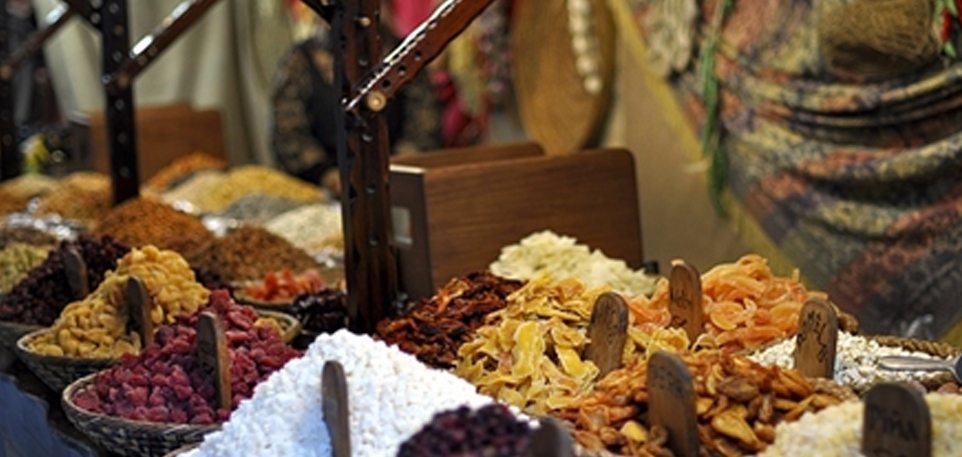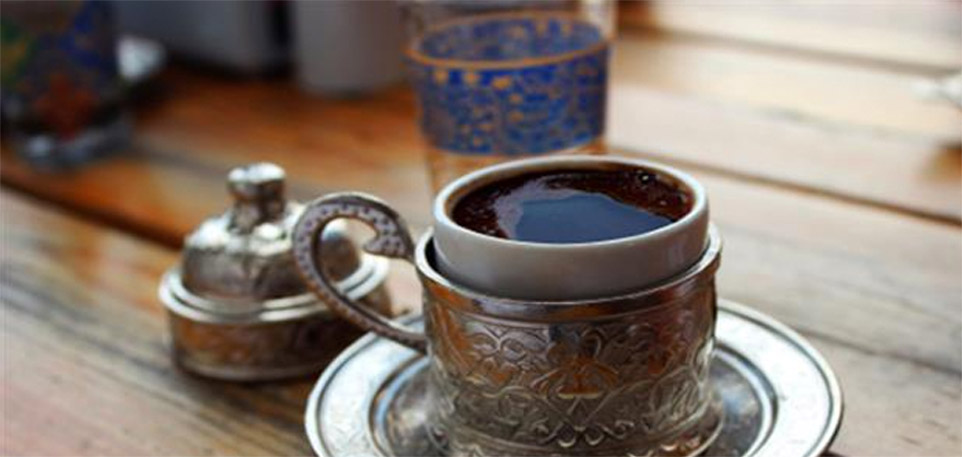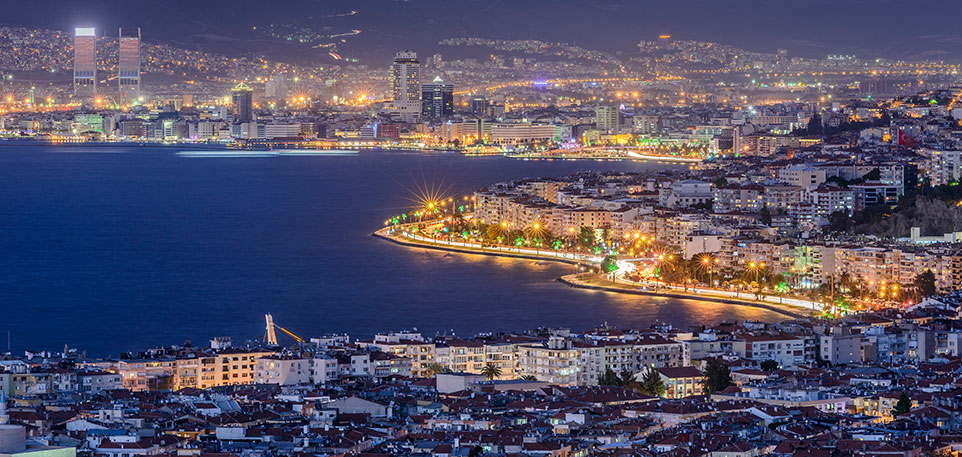
Taste the typical dishes
If you are in a hurry and you only have a few minutes at your disposal you can taste a very good "lahmacun", "kumru (yengen)" or "gözleme".
Izmir Kumru (yengen) and boyoz are the most famous food of Izmir along with kumru, a special sandwich, with kasseri cheese, "sucuk" is pronounced "soujouk" made with sausage and spices and slices of tomato. In our opinion, kumru is the ideal candidate for those who want to taste something new in a few minutes.
Boyoz and Gözleme of İzmir
All bakeries sell the boyoz and gözleme ... they can never miss the call !!! The Turks generally have breakfast or even lunch with these fantastic stuffed pies.
Boyoz is simply a dough between a mix of seed oil, flour and sesame, while the gözleme is a sheet of dough that is placed on large wooden cutting boards filled with various ingredients and cooked on a round plate. Gözleme can have as ingredients: feta and spinach, minced meat, eggs, cheese and mushrooms.
Lahmacun
It is the "Turkish pizza". It is usually stuffed with minced meat, spices, tomato sauce, parsley, onion, pepper and garlic ...
Izmir is a multicultural city the cuisine of which has been influenced by different peoples offering us a great variety of food. This originates from the Ottoman cuisine, which can be described as the fusion and refinement of the cuisines of Central Asia, the Middle East, the Mediterranean, the Caucasus and the Balkans. Turkish cuisine has in turn influenced these cuisines and those of neighboring countries, including those of Western Europe. The Ottomans have been able to merge the various culinary traditions on their territory, combining some influences of the Middle East with traditional elements of Central Asia (such as yogurt): they have created a wide variety of specialties, many of them with strong regional associations.
Culinary traditions
Turkey has welcomed the most diverse civilizations absorbing their respective cultures in its territory,: Lycians, Hittites, Romans, settling in all of Anatolia. Turks who came from Central Asia who, after a period of nomadic life and finally the Ottomans, the Empire of which, by its extension, gathered on a single table. The cultures of Egypt, Syria, Iraq, the Balkans and the Aegean of course, influenced the arts and the way of life, always adding new legs of colors. In fact, studying the cuisine and the way of eating it, is good to observe all the nuances existing between the various regions and to understand them well.
Table discipline is very important for the Turks. Lunch is a social event. It is where the whole family meets. The oldest member sits first and it is him who starts the meal, taking the first staple. Everyone sits around his place with respect and discipline. In the past and every other time in the countryside, dishes were not used, the food was served in a large serving dish in the center of the table and each of the guests using the spoon, took only the part placed in front of them without touching the one destined to another. As in all kitchens, in Turkish cuisine there are omnipresent foods, which you can not do without;
Eggplant
It is present in the preparation of more than 40 types of dishes and, for its aroma derived from nicotine, arouses the interest of foreigners. It is liked for its particular flavor and is always present, especially in summer, in all the dishes.
The Yogurt
It is eaten in large quantities and is used in the preparation of many foods or simply serve alone. Lightened with aqua, it becomes a very refreshing drink. It is an excellent antidote, a remedy used as the first intervention in case of poisoning.
The Pickles
Many varieties of legumes are ready to be kept under vinegar. It is used above all in winter, in the absence of fresh vegetables, are served instead of salads. They are indispensable food to combine beans and rice.
The white cheese
It is known as "feta" by the Greeks. Its flavor can change according to the regions due to the fatty substances it contains, the salt rate and the fermantation. It is produced in all around Turkey and is an essential food for the breakfast, It is also used as a filling in puff pastry (börek) or simply as an appetizer.
The Olives
Green or black, well-ripened, with an olive oil and red pepper, thyme, a few drops of lemon accompanied by slices of toasted bread, olive is the essential food for breakfast.
Breakfast
breakfast in Turkey consists of different types of foods in small quantities', various types of jams, white cheese, olives, butter, eggs, bread and tea. The fertile land and the scent of the sea surrounding İzmir makes it possible to give the city wonderful fruits and vegetables.The Turkish breakfast introduces in its recipe book a large quantity of fresh fruit and vegetables such as tomatoes, cucumbers and so on. As if that was not enough, the Turkish breakfast also includes different types of cheeses, pastries such as boyoz, gevrek, many types of bread and different meat types such as pastırma, sucuk. There is no shortage of tea, coffee, milk, honey, almonds ... So in order to enjoy a good Turkish breakfast, take it easy, as it will take at least an hour. "
After a meal, the Turk uses an expression that certainly does not go unnoticed:
"Afiyet Olsun" which literally means good digestion. It corresponds to the French expression "Bon appetite" and is used both at the beginning of the meal and at the end.
When someone wishes to express an appreciation on the servant dish, he will say "Elinize Sağlık" which means "God bless your hands", as you need to thank for the meal received and to conclude, the Turks toast saying "to your honor" that in Turkish translates with the word "Şerefe".
The legumes and fruit are very abundant in Anatolia, and it is therefore that in the summer, after harvesting they are stored in large quantities even for winter. There are different methods of preservation: drying in the sun, the squeezing of fruit juices, then cooked as syrup (pekmez) and marmelades.
Legumes are prepared in salomonia or canned, tomatoes and chillies in pure or in salt. With the flour pasta and tarhana is made. The peculiarity of Turkish cuisine is that all the ingredients are cooked together: meat, vegetables, rice, etc., so that the various aromas interfere with each other.
Food is always a little juicy to satisfy the custom and is eaten a piece of bread eating. The dishes are always cooked over low heat, with the lid closed.
The fillings (dolma) of various types and can be either prepared with minced meat (served hot), or with olive oil (served cold). Dolma can be wrapped with vine leaves or cabbage leaves or filled with green peppers of aubergines, tomatoes, or mackerel. The stuffed of those cooked with olive oil is composed of rice, chopped onion, sugar, chachella, dill, mint, lemon juice, chichi of dried raisins and dried pine nuts. the most special fillings of Turkish cuisine; very colorful and tasty cuisine.
Appetizers and salad: in the kitchen it is not very well known whether it is part of the appetizer category or not. However, it is certain that the raki is siped with appetizers and salads. According to the Qur'anic law fermented beverages that cause euphoria, are strictly prohibited. This is the reason why, despite the large amount of grape harvested in Anatolia. the wine production is not developed. As an alternative to stuck drinking, a distilled alcoholic drink of grapes and anise is produced, the production and consumption of which are widespread in Turkey. The rakı: during the Ottoman period only men drank sweet drinks at home or others, instead of drinking their own home, would go to the taverns sitting on taburés around a table surrounded by a large round tray with many saucers of various starters on them. This was also a way to consolidate mutual friendships.
The soup has an important place in traditional Turkish cuisine. It is the first dish of lunch. In Turkey in the countryside, soup is even eaten at breakfast, and especially winter, consumed with bread which is very nutritious. There are many varieties, and the base of one of these is the "tarhana" that is prepared in the summer. It is consisted of tomatoes, chopped onions and aromatized herbs, mixed with yogurt and flour, dried in the sun, and then kneaded with hands to make a granular powder to preserve for the winter. It is a bit 'the ancestor’ of instant soups of our days.
Fish and seafood: Fish merchants in Turkey have a way to expose their goods presented on round trays, where each variety is exhibited. Turkey, being a country surrounded by three quarters of the sea: Black, Aegean and Mediterranean, has a large quantity and diversity of fish. The most popular varieties are: mullet, palamis, sea perch, mackerel, anchovy, herring, swordfish, scorpionfish, turbot, cuttlefish, dentex, bass, tuna... Mussels, calamari, shrimp and octopus are abundant and are found very often in any restaurant.
The meat: the nomadic Turks of Central Asia who came to settle in Anatolia, undoubtedly fed on meat dishes, kept by the hunters and their farms. It is very strange to see that a people loving freedom and impatient nature, in the kitchens show a lot of patience and a range of variations in cooking that gives rise to tastes and flavors so different. After definitively established in Anatolia, they continued to apply the ancestral methods that still influence Turkish traditional cuisine today. As it can be seen, there are restaurants where you only eat meat, many butchers and many triplets. Köfte (grilled meatball), şiş kebab (meat skewers), hünkar beğendi (sauté lamb stew with melazane puree), kuzu kapama (lamb stew) and of course iskender döner is recommended.
The dishes with olive oil: Thanks to the geographical situation on the Mediterranean, Turkey is naturally rich in olive trees and consequently it is rich in olive oil that gives flavor and lightness to its cuisine.
The desserts: From the ninth century, when Islam was recognized as a state religion, the "Dessert Festival", religious festival, is celebrated every year for 3 days. As its name indicates, during this festive period, "lokum" is eaten. Sweets with almond paste, sweet almonds, types of syruped pastries, other kinds of Turkish pastry -so syrupy that you should drink over a large quantity of mineral water- like the "Baklava", offered by relatives and friends, to whom you go to visit during the holidays. Turks offer thier guests sweets to remember the moral of the turkish proverb "eat sweet to talk sweet". Turks like candies so much that in every neighborhood there are several shops where you can buy this kind of delicacies. (La Cucina Turca, Tuğrul Şavkay, 2010).
 Drinking Turkish coffee Scopri o riscopri con noi
Drinking Turkish coffee Scopri o riscopri con noi  Taste the typical dishes Scopri o riscopri con noi
Taste the typical dishes Scopri o riscopri con noi  Incontrarsi ad Alsancak Scopri o riscopri con noi
Incontrarsi ad Alsancak Scopri o riscopri con noi  Going to the sea Scopri o riscopri con noi
Going to the sea Scopri o riscopri con noi  Discover or rediscover the antiquities Scopri o riscopri con noi
Discover or rediscover the antiquities Scopri o riscopri con noi  Go shopping Scopri o riscopri con noi
Go shopping Scopri o riscopri con noi  Studying in İZMİR Scopri o riscopri con noi
Studying in İZMİR Scopri o riscopri con noi  Going to the beach club Scopri o riscopri con noi
Going to the beach club Scopri o riscopri con noi  Sunrise & Sunset Scopri o riscopri con noi
Sunrise & Sunset Scopri o riscopri con noi  Stroll along the seafront 'the Kordon' Scopri o riscopri con noi
Stroll along the seafront 'the Kordon' Scopri o riscopri con noi 